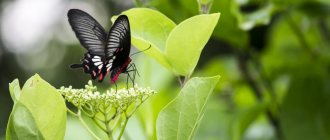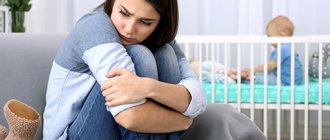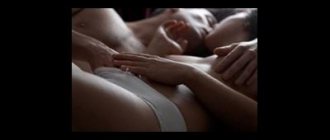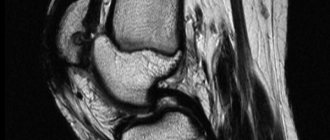What is apiphobia
Apiphobia is a pathological irrational fear of bees and wasps (or other insects visually similar to them). This kind of fear can also be called melissophobia and sphexophobia. The Latin name of the disease apiphobia is formed by adding two words: Apis - bee and Phobos - fear.
During an attack, apiphobes may experience severe anxiety or uncontrollable panic. The disease more often affects residents of megacities, since they are not used to seeing bees and wasps often. Age, as a rule, is not a barrier to the occurrence of the disease: fear of bees can manifest itself both in children (instilled by “caring” parents or appears after an insect bite) and in adults (as a consequence of childhood fears or severe consequences of bites).
Treatment methods
Due to the fact that fear is irrational, it is difficult to convince the patient of the benefits and safety of bees. Very often the disease is typical for children. If parents notice a problem, they should take action immediately.
Psychotherapists most often use the following effective treatment methods:
- Cognitive behavioral therapy.
- Hypnotherapy.
- Behavioral therapy.
With the help of these techniques, the patient gradually gets rid of fear. At first he can calmly look at the picture, and after a while he can look at the real bee. In some situations, an apiphobe becomes a beekeeper after treatment.
With timely treatment, the cause will be identified. A course of therapy is considered effective if a person is not afraid to encounter a large concentration of bees. But contact with flying bees is a real test for the patient.
Those who were able to get rid of fear are considered winners. Today, there are many special programs in which the patient must come into contact with bees. However, they are not very effective. Although a virtual meeting is a kind of preparation with a real enemy.
For preventive purposes, in order to avoid the development of apiphobia, it is necessary to have as little contact with insects as possible, try not to watch various horror films, and also try to exclude insect bites.
How to distinguish a phobia from ordinary fear
Mysophobia - what kind of disorder is it?
Almost all people experience fear of bee-like insects, but this does not mean that everyone can be called apiphobe.
Fear is a feeling that arises from the direct sight of a flying and buzzing insect, which can potentially sting and provoke pain and some kind of allergic reaction. At the same time, the person is aware of the danger of a bee or wasp and tries to behave in such a way that they do not have a desire to sting (does not try to drive away or destroy the insect, leaves the place where the bees or wasps are located, turns to specialists for help in eliminating them).
Pathological fear of bees, wasps and bumblebees is a condition beyond a person’s control, a phobia that appears at any hint of the appearance of insects (buzzing, visualization, words, drawing, etc.), the individual cannot bring himself to overcome horror and panic, to return to a normal state .
Main symptoms of apiphobia
Fear of snakes - what kind of disorder is it?
Like other types of phobias, fear of bees has its own specific symptoms, which can be detected depending on the individual characteristics of the patient and his psychotype. Most often, when seeing an insect, a patient experiences:
- horror and panic, even to the point of hysteria;
- uncontrollable anxiety;
- changes in blood pressure;
- tachycardia;
- breathing problems;
- disorientation in space;
- strong need to escape;
- dizziness and (or) weakness;
- increased sweating.
Important! Signs of the disease can appear not only when visually encountering a bee or wasp, but also when looking at a drawing, photo or video.
Panic with apiphobia
Symptoms
It is very difficult to predict the behavior of a person who has this phobia. Some people simply avoid bees and try not to get close to them. Others, seeing a bee, begin to run. But there is a separate category of people who kill insects out of fear.
It is dangerous when the patient is aggressive, constantly chases bees, and takes pleasure in killing them. There is a group of apiphobes who are very afraid of bees, so they do not go out into nature, while they are indifferent to butterflies, dragonflies, and mosquitoes.
Almost all apiphobes suffer from anxiety disorder, rapid heartbeat, increased sweating, some experience a sharp rise in blood pressure and weakness.
Causes of bee phobia
Anxiety-depressive disorder
To understand whether apiphobia is a fear of something, you should find out the reasons for the appearance of this disease:
- painful bee or wasp stings received in childhood (especially in early childhood);
- severe allergic reaction to bites;
- impressionability or highly excitable nervous system;
- unconscious fear of anaphylactic shock;
- genetic prerequisites (it is believed that since ancient times a person has been afraid of the buzzing of insects as a potential threat to life and health; this fear is embedded in the human genetic code, it depends only on the psychotype of the individual, how much this fear will manifest itself).
Causes of apiphobia
Psychotherapists are sure that the fear of bees appears if a person experienced a painful insect bite in childhood. Everyone knows that children are sensitive and emotional individuals. And the pain always remains in their memory.
A more serious cause of apiphobia is an allergy to bees. When one insect stings, allergies rarely occur - the bite site may itch a little and swell. Many allergy sufferers are afraid of anaphylactic shock, so they have a panic attack at the sight of a bee. For example, if a bee accidentally flies into a room, a person runs out of the room, sometimes even forgetting that he is without clothes or shoes.
Some people begin to be afraid of bees after they read the yellow press, the Internet about killer bees, mutant wasps, wild bees. Such information has a negative impact on the human psyche, so he begins to consider good bees a dangerous enemy.
Interesting! People often do not understand how dependent they are on the honey bee. Without these insects, many cultivated plants would not be pollinated. Of course, it becomes scary when you read horror stories about deadly poison. And, if a person is also apiphobic, then he generally embellishes everything in his imagination and his mental state deteriorates sharply.
The mechanism of occurrence and development of apiphobia
Predisposition to the development of the disease usually occurs in childhood. The start for the intensive development of the disease is a negative encounter with bees, bumblebees or wasps.
There are 3 stages of development of fear:
- Education of free fears. At this stage, acquaintance with bees occurs. Most often this happens in childhood, when adults show the child bees and tell them that they should be afraid. The baby develops a false idea of the inevitability of a bee sting and a subconscious expectation of trouble. Unconscious fear is aggravated if the bee actually stung the baby, and he remembers the pain and fear for the rest of his life.
- Development of an exaggerated form of fear. At this stage, uncontrollable panic attacks appear at the sight or sound of a flying insect.
- The occurrence of a panic reaction under normal conditions. A person suffers from constant anticipation of an attack by bees or wasps. Auditory or visual hallucinations occur, triggering the mechanism of panic.
Fear of a bee or wasp sting
Important! A person can diagnose a fear of wasps and bees on his own and seek help from a specialist in the early stages of the disease.
Features of fear of bees and wasps
A bee or wasp sting, especially if there were unpleasant consequences afterwards, can further lead to the development of apiphobia
Apiphobia is an irrational, uncontrollable fear of bees and wasps. Fear occurs in many people who have been bitten by these insects. In fact, fear extends to any striped stinging insects: wasps, bees, bumblebees. According to ICD-10, the disease is designated by code F40.2 and refers to specific isolated phobias.
A person of any age can develop a fear of bees, but most often the fear comes from childhood. It can worsen either at the sight of an insect or from just a buzzing sound.
To remember this phobia or exactly what the fear is called, you just need to know the name of bees in Latin - apis. The problem is most often encountered by residents of large cities where there are few insects. As a rule, children from rural areas get used to seeing these insects from childhood, so they are quite calm about wasps and bees.
You should be able to distinguish normal fear from pathological fear. In the first case, a person is afraid of being stung, since an insect bite is accompanied by pain and can cause allergies. In fact, the normal reaction is to fear encountering such insects. We speak of pathological fear only when a person experiences uncontrollable horror at the sight of such insects, which he cannot cope with on his own.
Causes of the disorder
Since apiphobia is the fear of bees, the reason for its development is quite obvious. Pathological fear occurs in people who have previously been bitten by bees or wasps. Usually the disorder originates in early childhood, since an insect attack in a small child is accompanied by severe fear. Against the background of stress, the “bee-pain” attitude is reinforced, which becomes the cause of the development of a phobic disorder.
It is not uncommon for a person who is allergic to insect venom to be afraid of bees, wasps or bumblebees. Fear in this case is caused by fear for one’s own health or even life. At the same time, apiphobia can be accompanied by other disorders: fear of death, illness, pain.
An unobvious reason for the development of a phobia is the characteristics of upbringing. Unfortunately, not all parents have the patience to answer children’s questions or teach their child safety rules, so many are simply intimidated by the consequences of bee and wasp stings. Instead of correctly explaining to the child the reasons for the attacks of these insects and the characteristics of behavior when they occur, parents vividly describe the pain from the bites, allergy symptoms, and scare them with serious consequences. As a result, an impressionable child may develop a lifelong fear of such insects.
Another unobvious reason for a phobia is watching horror films in which insects attack people, or bees are deliberately set on a person. For people with a weak psyche, such a plot may be enough to acquire this phobia.
Symptoms of apiphobia
Even at the sight of a small striped insect, an apiphobe begins to have attacks of panic and uncontrollable anxiety
The fear of wasps, bees and bumblebees, called apiphobia, has the same symptoms as other specific disorders. A person experiences horror and panic when encountering a dangerous insect. Some people need to see a bee, others just need to hear the buzzing of an insect. The phobia may also be exacerbated by seeing images of bees or videos that show a colony of insects.
Symptoms of pathological fear:
- growing panic;
- uncontrollable anxiety;
- increased blood pressure;
- dizziness;
- rapid pulse;
- dyspnea;
- disorientation;
- desire to escape.
As a rule, when meeting an object of fear, a person loses self-control. Panic fear makes him behave inappropriately at the sight of a bee or wasp. Thus, an adult may suddenly scream and try to run away from a stinging insect. Pathological fear in a child manifests itself as severe hysteria, even to the point of a seizure.
Ways to deal with the fear of bees
Like other types of fears, apiphobia can be treated with psychotherapeutic and medicinal methods. In the early stages, the disease is cured in almost 100% of cases. The third stage takes longer to treat, but even here there is a high chance of defeating the disease irrevocably.
The following stages of treatment can be mentioned:
- consultation with a psychotherapist, a clear diagnosis;
- identifying and working through the underlying causes of the disease;
- drug relief of acute symptoms of the disease;
- psychotherapy for fear of bees (usually about 10 sessions with a psychotherapist).
Professional help and self-medication
To treat apiphobia, psychotherapists most often use:
- hypnotherapy,
- neurolinguistic programming (NLP),
- behavioral therapy.
During psychotherapeutic sessions, a specialist helps a person realize that bees and wasps are not aggressive insects and do not attack for no reason (a bee can only sting once in its life, so it only bites when there is some kind of threat). If you do not create this threat, then the bees and wasps will peacefully fly on their way.
The most common method of treating a phobia of bees is a gradual rapprochement with the object of fear. Sometimes, to correct an individual reaction to insects of the Bee family, cognitive-behavioral psychocorrection is carried out. The fears are then worked through through images of bees. After some time, when the patient is already able to curb his emotions, he begins to watch videos about bees and wasps. Some specialists, in the final stages of treating the disease, take patients to beekeeping farms. Gradually, the fear of bees and wasps dulls; over time, the patient will learn not only not to panic at the sight of striped insects, but can also acquire his own apiary.
Consultation with a specialist
Also, in the treatment of bee phobia, the use of:
- techniques for teaching correct behavior;
- ways to eliminate inappropriate reactions;
- psychological correction;
- methods for building self-confidence and a sense of responsibility for one’s behavior.
Medications are prescribed for severe stages of the disease and if the patient exhibits signs of other neurological or mental illnesses (neurosis, depression, etc.). In such cases, the doctor prescribes:
- sedatives;
- antidepressants;
- tranquilizers.
Important! Medications are not the main method, but only an auxiliary method of treating apiphobia.
In the initial stages, you can easily cope with the disease on your own. For this use:
- meditation,
- breathing exercises,
- art therapy;
- independent gradual rapprochement with the object of fear;
- autogenic training or self-hypnosis.
Cure from illness
Thus, apiphobia is a rather dangerous illness that can significantly worsen the quality of life. If a person has sufficient willpower, is properly motivated and promptly seeks help from a qualified specialist, then within some time the symptoms of bee fear will disappear and the individual can return to a full life.
Stages of treatment
Correction and elimination of the root cause of the disease is carried out by a specialist. He must have a license to practice psychotherapy.
Therapy is carried out in stages. At the initial appointment, the specialist determines the cause. The fear of stinging wasps did not arise without reason. The doctor finds out what was the triggering factor. When the cause is determined, the specialist makes a diagnosis. After this, treatment is prescribed.
At the second stage, the psychotherapist selects a technique. An individual program is drawn up for the patient . If necessary, medications are prescribed. Drug therapy helps relieve nervous tension. This minimizes the risk of panic conditions.
The third stage consists of psychotherapy sessions. The patient undergoes hypnosis and engages in auto-training. He regularly attends cognitive behavioral therapy classes. A long course of therapy is necessary to achieve better results. The therapy includes ten sessions . At the final stage, re-diagnosis is carried out. If the patient's condition is still unstable, the doctor prescribes a second course of therapy.











